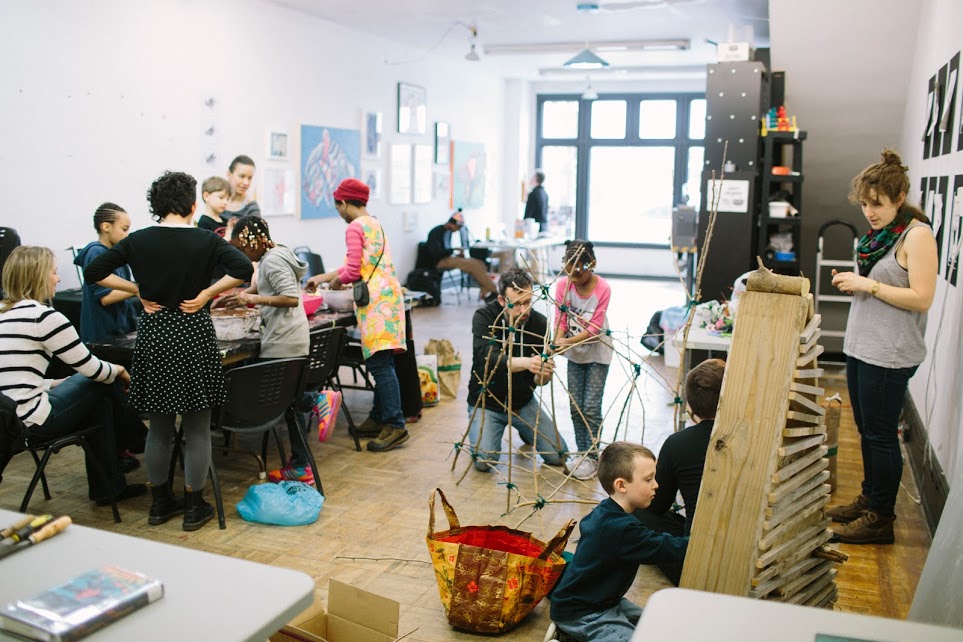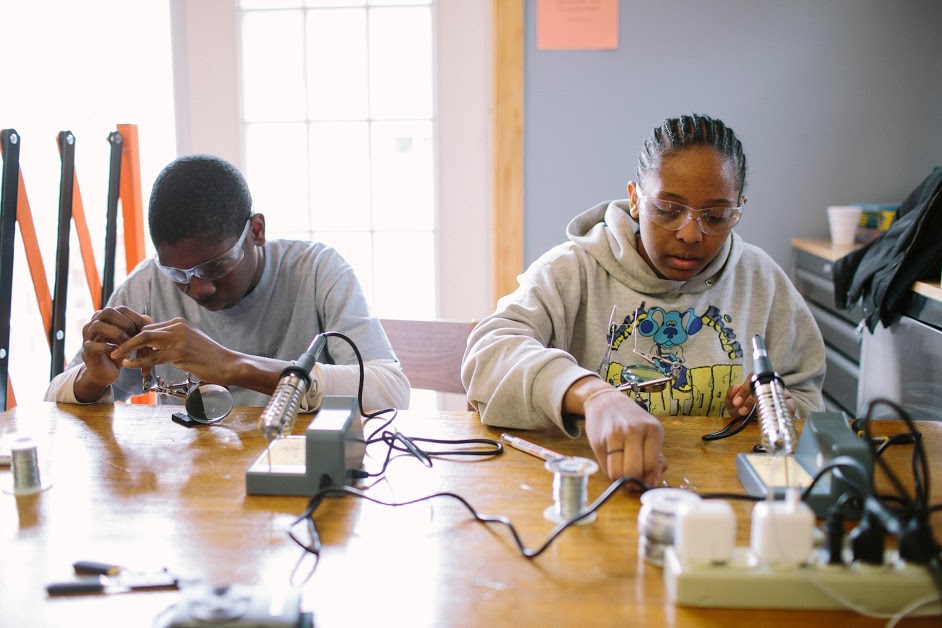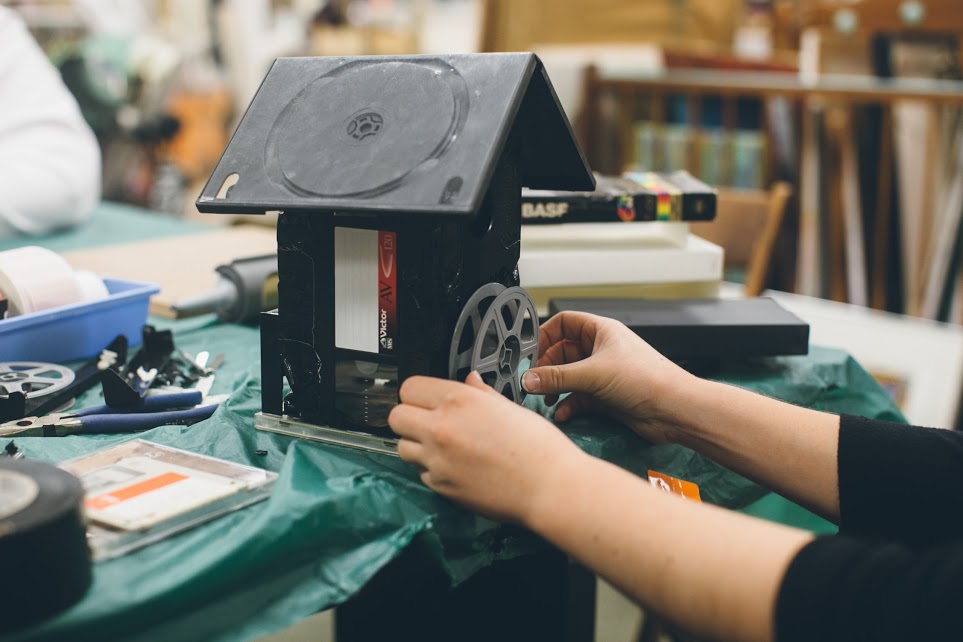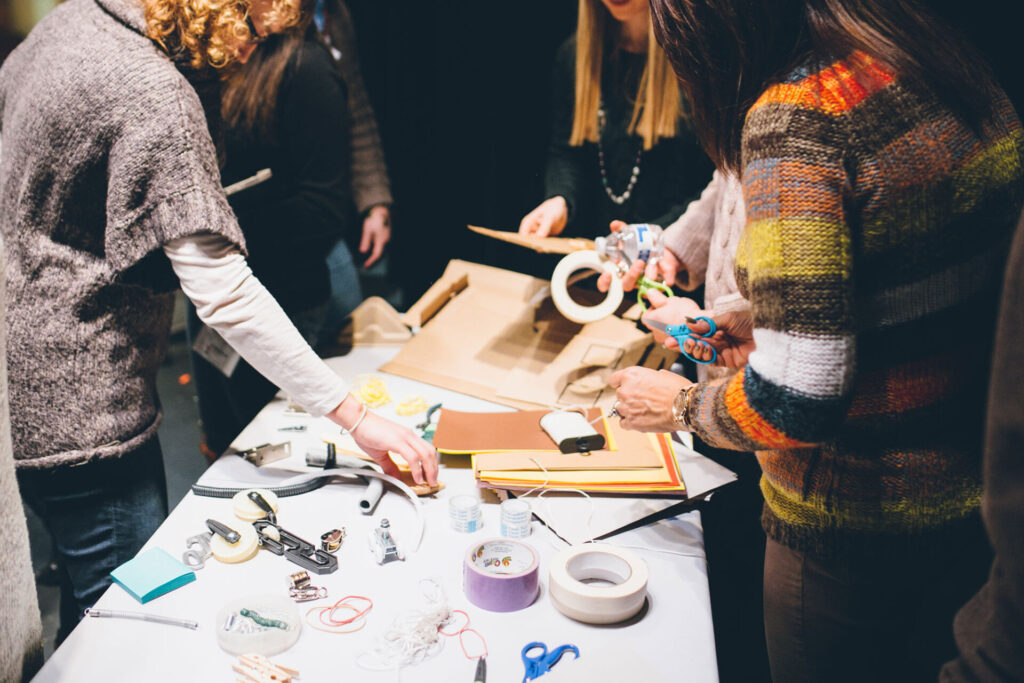Makerspaces come in all shapes and sizes, outfitted with everything from cardboard and string to sophisticated, up-to-the-minute tech tools. For many educators interested in establishing a makerspace, the possibilities (and often, the unfamiliar technology), can be overwhelming.
We talked to local educators and program organizers to learn what advice they give to those getting a makerspace started, from planning a space to keeping users consistently engaged.

Know Your Audience and Let Them Know What’s Going On
“Figuring out what your audience is interested in can help inform what your space should have and what it should do,” said Roman Benty, Maker Educator at Millvale Community Library.
In addition to more traditional maker projects, the library hosts a range of music-focused programming, offering iPads with Garage Band software and other instruments, as well as providing a space for kids to drop in and play music. Benty expanded the library’s musical programming after the young people who frequent the space expressed a strong interest in it.
“If people don’t have a clear definition of what goes on at a makerspace, they’ll misuse the space: drop in, take away resources without having a plan, or go in and just putz around,” said Benty.

He recommends planning ahead to identify ongoing “umbrella” themes. Not only do makerspace visitors know what is going on and have clear expectations coming in, but maker educators have a structure to work with in planning projects. A recent “sustainability month” at the library offered Benty the flexibility to offer projects related to alternative energy sources, upcycling and recycling, and more.
“It’s nice when you have a topic broad enough to incorporate different kinds of projects that relate to a central theme,” he said. “It’s a good way to stay organized.”
Use What You Have
Letting the materials that are on-hand drive maker programming can also be effective.
“Our philosophy is that part of making is also making do with what you have,” said Rebecca Grabman, MAKESHOP Manager at the Children’s Museum of Pittsburgh. That includes resources in the home “or in the brains of the people around you.”
Nora Gilchrist, Creative Education Manager at the Pittsburgh Center for Creative Reuse (PCCR), agrees. PCCR offers an embarrassment of riches when it comes to materials that educators might consider for use in their makerspaces—everything from googly eyes to trophies, construction paper, and old VHS tapes can be found in its Point Breeze shop.

PCCR also offers a robust slate of educational programs for kids and families, with visits to events and festivals around the region. Offering a “buffet of materials” to draw inspiration from, PCCR educators challenge visitors: what can you do with this material?
That “making do” approach also extends to project ideas and lesson plans, said Grabman.
“Books and libraries are a fantastic resource,” she said. “There isn’t the sexy wow factor of 3-D printers, but cool resources from the 1970s about weaving and knot-tying can lead you down all kinds of fun pathways.”
Make Use of Resources
Creativity is at the heart of maker education—so be creative in seeking out resources, from materials to project ideas to people to connect with. The educators we spoke with suggested some of their favorite places to look for everything they need to keep makers inspired.
- For materials, there’s no place in Pittsburgh like the Pittsburgh Center for Creative Reuse (and don’t overlook Construction Junction, right around the corner). For organizations, Gilchrist recommends the ReCreative Partnership, which offers a discount at the shop for an annual fee.
- Other reuse-specific resources that Gilchrist recommends include the Imagination Factory’s Trash Matcher, the projects page of New York–based reuse center Materials for the Arts, and the Lancaster Creative Reuse Center, which maintains a directory of reuse centers in the U.S. and around the world.
- Grabman and Koffler read the Sparkfun Education blog. (Grabman wrote a piece for the blog on making for learners of all ages.)
- Multiple program leaders pointed to org and DIY.org as terrific resources for project ideas.
- On social media, Gilchrist looks for inspiration to the hash tags other creative reuse centers use to mark their posts: “#creativereuse has been amazing,” she said. “Also #choosetoreuse.”
- Grabman and Koffler recommend in-house resources like the MAKESHOP blog and MAKESHOP Instagram and Twitter accounts, where educators can turn for project ideas and lesson plans. Beyond the Museum, they recommend Learning Practices and the Making Connections Game at Making Museums and the Making Spaces Toolkit.
Form Connections—Near and Far
Don’t be afraid to reach out to other makers and educators. Connecting with community and regional partners is vital in keeping makerspaces current and bringing in fresh and interesting new project ideas.
Gilchrist forges connections by visiting schools and libraries and hosting pop-up events throughout the year. In Millvale, Benty partners with Ton Pottery and the Millvale Murals of Maxo Vanka.
For Katie Koffler, Making Spaces Manager at the Children’s Museum, that can mean connecting at the annual Maker Faire, which brings together makers and creators for networking and sharing.

But Koffler also connects with makerspaces and children’s museums beyond the region.
“Making time over the phone, virtually, or in real life has been really valuable for us,” said Koffler. “Creating relationships through social media has been invaluable.”
Gilchrist agrees. She’s used Instagram to find other creative reuse centers around the country, and uses social media to share project ideas, useful articles, and to form connections.
“It’s very interesting to follow those rabbit holes,” she said. “It’s inspirational to see how other centers are working with others.”
photos: Ben Filio Photography
